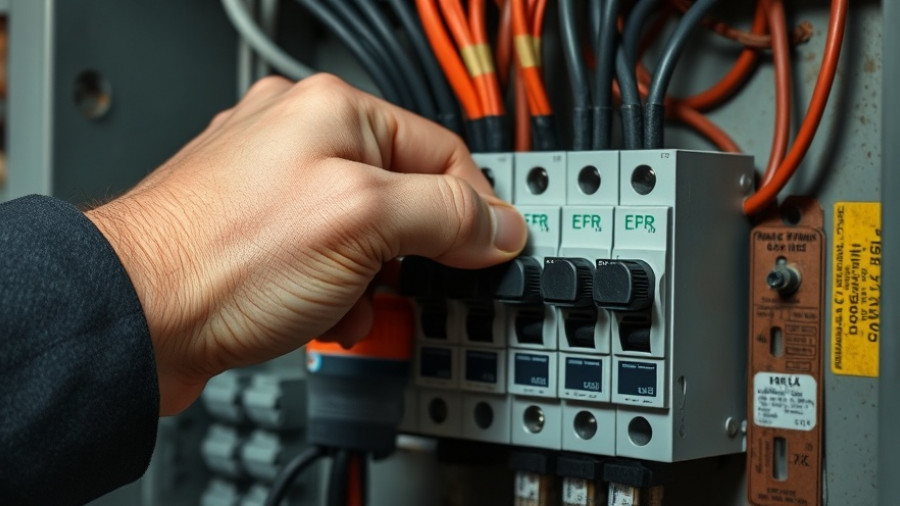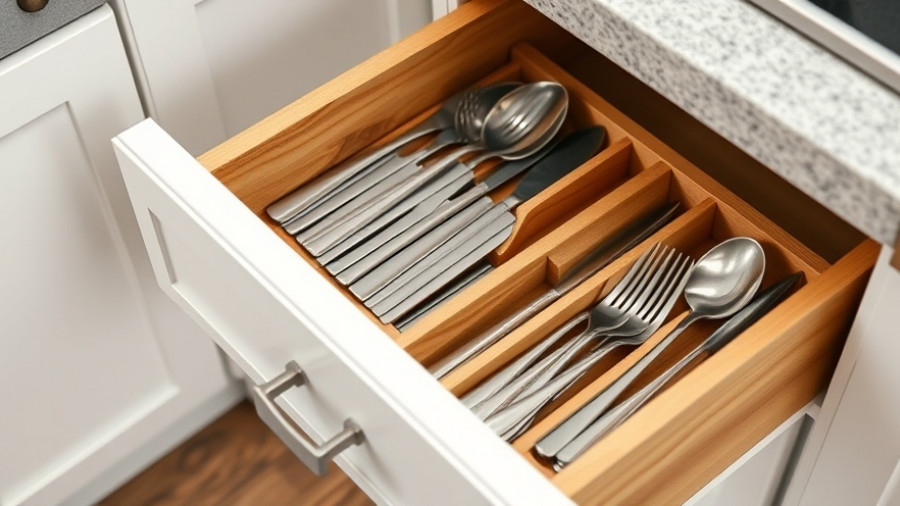
Understanding Why Your Breaker Keeps Tripping
For many homeowners, it's an all-too-common scene: you turn on your favorite high-wattage appliance, only for the lights to flicker and the power to cut out. If your breaker keeps tripping, it's more than just a nuisance—it's your electrical system’s way of alerting you to deeper issues. While this protective mechanism is essential in preventing electrical hazards like fires, persistent tripping indicates a problem that's begging for immediate attention.
What Causes Your Breaker to Trip?
Most circuit breakers trip for distinct reasons, which can generally be categorized into three major categories: overloads, short circuits, and ground faults. Understanding these causes can empower you to diagnose issues effectively, ensuring your home's safety and functionality.
Circuit Overload: Too Much Demand on One Circuit
The most frequent reason for a breaker tripping is an overloaded circuit. Think of your electrical circuit as a large pipe—just as too much water pressure can burst a pipe, too many devices pulling power from the same circuit can prompt the breaker to trip. Common scenarios leading to overloads include trying to run a microwave alongside space heaters or multiple high-demand tools plugged into the same outlet.
Tip: Check your breaker’s amperage and avoid exceeding 80% of this limit to stave off overloads. If you find yourself frequently resetting your breaker, you may want to consult an electrician about installing dedicated circuits for power-hungry appliances.
Short Circuits: A Dangerous Encounter
A short circuit occurs when the hot wire makes contact with either a neutral wire or another hot wire, resulting in a surge of current flow. This scenario often results in immediate breaker trips and can be accompanied by alarming signs such as sparks, burning smells, or discoloration around outlets.
If you notice your breaker trips right away after being reset, this is likely indicative of a short circuit. It’s crucial for your safety to unclutter the circuit of devices and call a professional electrician to conduct a thorough inspection to locate and remediate damaged wiring.
Ground Faults: Silent Yet Hazardous
Ground faults can pose substantial risks, occurring when electricity diverts from its intended path to a ground source, frequently through moisture or metal. These malfunctions are especially common in high-humidity areas like bathrooms or outdoors. Symptoms may include the breaker tripping when devices are plugged into specific outlets, or feeling warmth or a tingling sensation when touching outlets.
Tip: Make regular checks for moisture around outlets in these vulnerable areas. If the presence of water is suspected, consult a licensed electrician to ensure safety before using those circuits again.
Practical Tips for Maintaining Electrical Safety
Beyond understanding tripping, maintaining electrical safety in your home requires diligence. Schedule regular inspections of your electrical system and the appliances you frequently use. Use surge suppressors for valuable electronics, and replace any damaged cords immediately.
Understanding Circuit Breakers
Circuit breakers are your home's first line of defense against electrical hazards. Knowing how they function—shutting off power in the event of unusually high electrical flow—can help you better gauge your electrical needs and safety measures. Ignoring the tripping problem or frequently resetting the breaker leads to potentially hazardous conditions.
Call for Professional Help
If you’re experiencing persistent tripping issues, don’t hesitate. Seeking the expertise of a licensed electrician not only ensures thorough diagnostics and repairs, but it might also save you from future expenses caused by electrical damage or fire hazards.
Taking prompt action can prevent damage to your home’s wiring and, more crucially, protect the safety of your loved ones. Investing in routine electrical maintenance will give you peace of mind knowing your electrical system operates efficiently and safely.
If you're considering home renovations or upgrades, whether for aesthetics or energy efficiency, make sure to keep in mind any alterations in your electrical load. A home maintenance planner can be an invaluable tool in ensuring safety.
Consider giving your electrical system a check-up—schedule an evaluation with a local professional to ensure your peace of mind.
 Add Row
Add Row  Add
Add 




Write A Comment